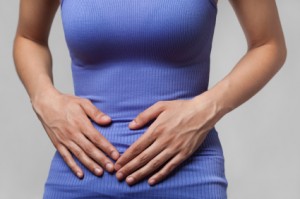
Chronic Constipation & Getting You Going Again
Leave a CommentThe old saying that “happiness is an empty bladder” easily could be adjusted to include that “happiness is a properly functioning bowel.”
Did you know that approximately 80 percent of the population experiences constipation at some point in their lifetime? Constipation is defined as difficulty (straining to pass) or infrequent bowel movements (fewer than 3 per week). Common symptoms of constipation include the need to strain to have a bowel movement, a sense of incomplete emptying, decrease in the amount of stool passed, and the need to use enemas, suppositories, or laxatives to aid in maintaining regularity.
 Many factors can cause constipation, including medications, travel, abuse of laxatives, limited fiber and fluid intake, repeatedly ignoring the urge to have a bowel movement, decreased activity levels, and dietary imbalances. Bowel conditions such as Irritable Bowel Syndrome (IBS) can lead to constipation as well. It is important to alert your physician to any significant changes in your bowel habits.
Many factors can cause constipation, including medications, travel, abuse of laxatives, limited fiber and fluid intake, repeatedly ignoring the urge to have a bowel movement, decreased activity levels, and dietary imbalances. Bowel conditions such as Irritable Bowel Syndrome (IBS) can lead to constipation as well. It is important to alert your physician to any significant changes in your bowel habits.
Normal frequencies for bowel movements are anywhere from three times per week to three times per day. An average stool should be about the size, shape and consistency of a ripe banana.
Short bouts of constipation are normal, but if your symptoms have been present for three months or more, it’s considered chronic. With chronic constipation, you might experience bladder dysfunction, gas with bloating or pain in your pelvis, abdomen, lower back, or hips. These symptoms can lead to decreased interest in social activities, increased time in the restroom, and stress. Your body needs to have a synergy to work properly.
But you can reduce your struggles with constipation, and we can help you.
To maintain proper bowel health, make sure your diet includes about 30 grams of fiber each day. It also is important to drink plenty of fluids when increasing fiber intake to assure that the stool remains soft and easier to pass. Regular exercise will help to stimulate the bowels as well!
Physical therapy can help decrease the tension and tone of the muscles in your pelvic floor and abdomen. We can work with you to improve the synergy of the firing patterns of your abdominal and pelvic floor muscles as well as to improve core strength to decrease any lower back and/or pelvic pain you are experiencing.

